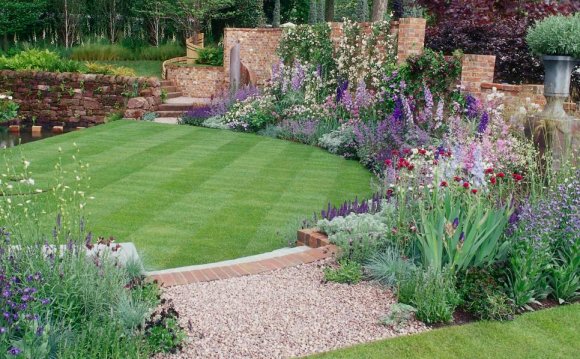
To fit this backyard's dimensions, we've selected the dwarf Southern magnolia (Magnolia grandiflora 'Little Gem'). A smaller cousin of the stately tree, the Little Gem still produces the magnificent blossoms but can be kept pruned to the size of a small tree or large shrub. What makes the magnolia really beautiful are the large leaves and the huge flowers. Those do great in the South, but in areas that are colder, like the Northeast, you can substitute a plant like paulonia, which has equally huge leaves and flowers. You'll get the same effect of a romantic, strong statement tree that can really take the cold.
These are another signature - but not native - plant of the South. They will help define the areas of the walkway in the same way that the groundcover roses are doing on the opposite side.
Facts About Daylilies
In fact, daylilies - which originated in China - are an essential ingredient in hot-and-sour soup and are best when they're just opening. Because the red varieties tend to be somewhat bitter, if you plan to grow daylilies to eat, you should choose the yellow ones.
A row of these garden jewels will add lush foliage and a punch of color along the back fence. Hydrangeas come in pink and blue. You can turn a pink hydrangea blue by adding aluminum sulfate to the soil. Or if you have a blue hydrangea you want to turn pink, add superphosphate.
Behind the clothesline, and in close proximity to the blue hydrangeas, plant a bed of green-leaved euryops (Euryops pectinatus 'Viridis'). Euryops come from South Africa; they like lots of sun, and they don't like lots of water. One thing about euryops that's fantastic is that they bloom quite a long period of time. Remember: They are short-lived perennials. They'll go from three to seven years, but eventually you're going to have to tear them out and replant them or cut them back and rejuvenate them. Euryops daisies are a great choice along this fence. The bright yellow of the flowers contrasts nicely with the wood, and they'll bloom almost year-round.















